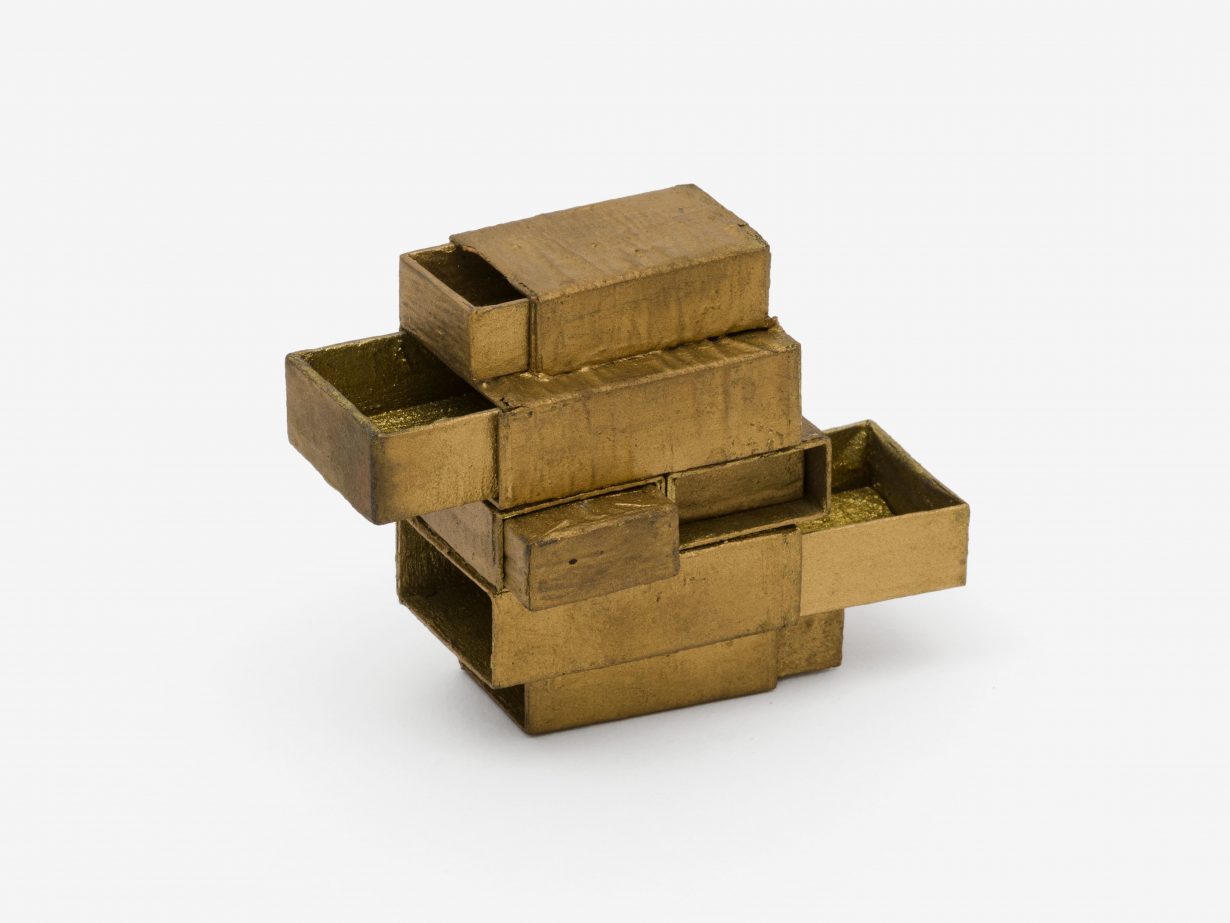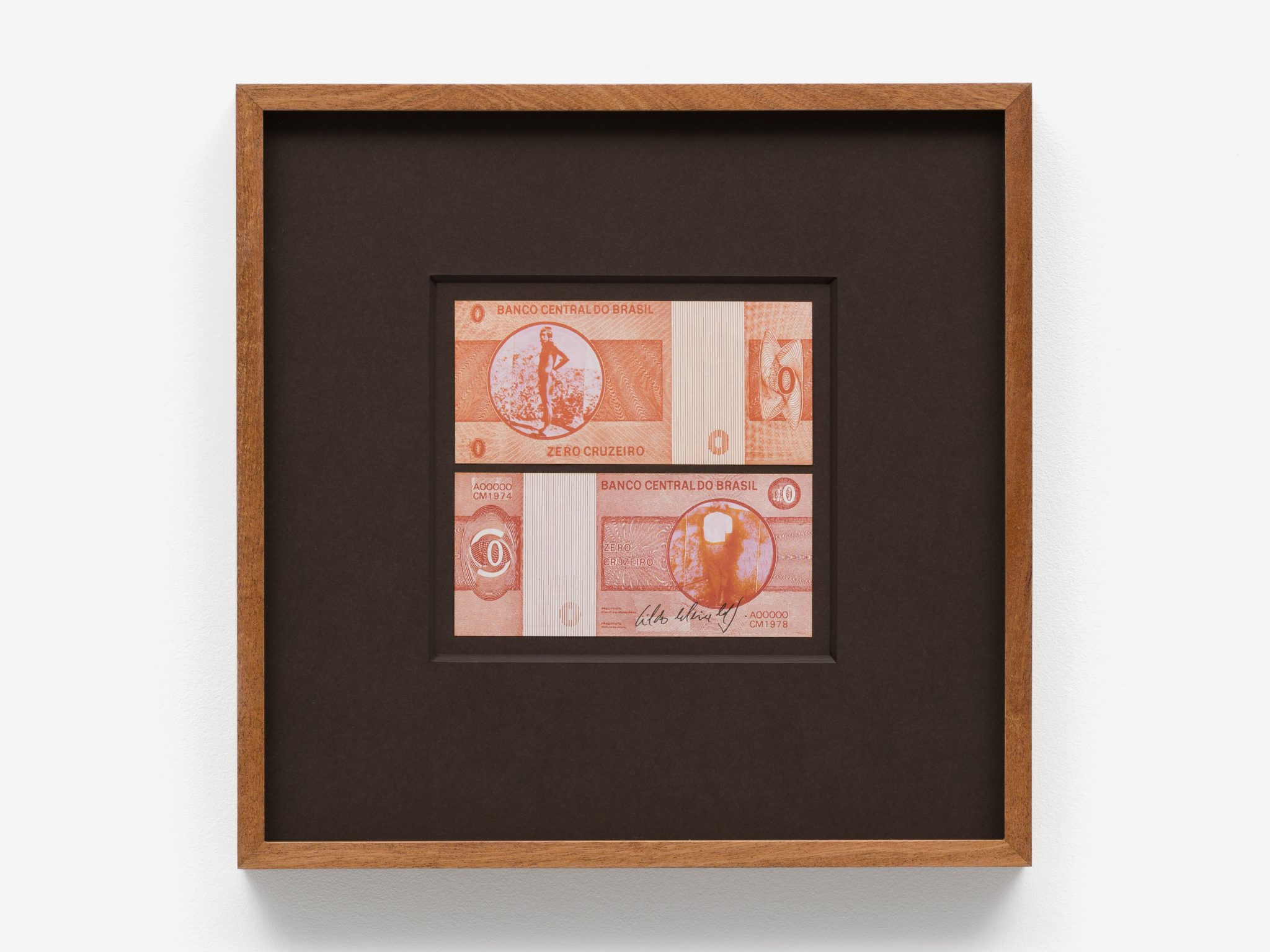Angel with a Gun at Alison Jacques, London remembers the critic and curator in dialogue with the present artworld and its engagement with non-Western history
The contemporary artworld is so defined by its internationalism – the circulation of art, artists and information – that it’s hard to imagine a time when artistic scenes struggled to know what might be happening on the other side of the world. In the postwar world pre-internet, it took personal contacts and the ability to travel to connect what was happening in London to that in, say, New York, or Athens, or Rio de Janeiro. The English critic and curator Guy Brett, who died in 2021, was that kind of connector: who, from the 1960s enthusiastically supported artists from Europe and, more consequentially, Latin America. Angel with a Gun is assembled from Brett’s collection, consigned to the gallery by his widow, but its deft selection and arrangement opens an interesting dialogue with the present artworld and its curatorial engagement with non-Western artistic and political history.
The show’s three sections run roughly chronologically, starting with works mostly from the 1960s, mostly associated with the Kinetic art movement, moving then to works from the 1970s and 80s, focused on Latin American politics, and finishing in the basement gallery devoted to a large group of works by the Brazilian artist Lygia Clark, with whom Brett maintained a lifelong friendship. With hindsight, these three groupings appear to replay the question of how political or apolitical an artwork might be, vividly the case in the contrast between the first room of abstract Op and Kinetic works and the more militant political works that follow. Still remarkable over half a century later are works such as the Venezuelan artist Jesús Rafael Soto’s dizzying wall reliefs Physichromie 127 (Plates 58 A-C) (1964) and Vibration (1965); the latter a seemingly simple hanging mobile of thin yellow arcs, suspended in front of a panel subdivided into a white and yellow quarter, and a grey lower half marked with horizontal parallels. It’s completely unmysterious in its fabrication and yet visually dizzying and spatially enigmatic in its effect, and embodies something of Kinetic art’s heady, utopian idealisation of art as an integrated, more-than-visual and implicitly social form. Nearby are works by fellow Brazilian ‘Neo-Concrete’ artists Clark and Hélio Oiticica, by now famed for having pursued a more interactive, quasi-social rethinking of art objects – Clark’s articulated sheet-aluminium sculpture Bicho (Monument in all situations) (1964), and Oiticica’s primary-coloured box, disgorging a vinyl bag of pure blue pigment (B 30 Box Bólide 17 [Poem Box], 1965–66) both signal the turn they pioneered away from abstraction (though still steeped in its vocabulary) towards an idea of human participation beyond mere spectatorship. It was Brett, of course, who organised Oiticica’s first solo show in Britain, at the Whitechapel Gallery in 1969.
That Oiticica showed in Britain by then was less to do with the breezy internationalism that had marked the 60s, and more to do with escaping the brutal political repression that was gathering pace across Latin America, in Argentina, Brazil and later Chile, forcing many artists into exile.

It’s that history that underpins the subsequent room of works, dominated by Oiticica’s protest banner Seja marginal seja herói (Be an Outlaw, Be a Hero) (1968), with its gunned-down protester screenprinted in black on red cloth, surrounded by works by Cildo Meireles, variously from 1978, 1984 and 2013, in which variously fake banknotes – US dollars, old Brazilian cruzieros – are doctored to show a ‘zero’ value, while depicting, in place of various official figures, portraits of Indigenous people (Zero Cruzeiro, 1978). The reality of political violence is similarly taken up in Eugenio Dittborn’s Mail-art piece airmail painting, no. 48 – ‘9 survivors’ (1986), memorialising, through its fictionalised female subjects, those ‘disappeared’ by Chile’s dictatorship under Augusto Pinochet.
These political works are both of their time and are now comfortably accommodated by an artworld more accustomed to platforming politics. During the 1970s and 80s, art as political protest still carried a degree of risk. Here they seem a little inert, compared to the compact energy that still inhabits the earlier Neo-Concretist works. Brett, appointed chief art critic of The Times in 1964, aged twenty-two, had been an active supporter of exiled Latin American artists in London. He was finally sacked from The Times in 1975 for the increasingly political content of his criticism. Downstairs, presented like relics, are cabinets of Clark’s tactile, haptic interactive works: instructions to fill polythene bags with stones and air; elastic bands to be assembled in skeins; and the little Estruturas de Caixa de Fósforos (1964) sculptures, glued-together matchboxes, painted in red, gold, white and black, which seem to invoke architecture and monuments, and the memory of utopian art of the earlier century from across the Atlantic; De Stijl, Suprematism… art always in fragile, quixotic relation to the possibility of social transformation.
Angel with a Gun: Homage to Guy Brett at Alison Jacques, London, through 15 June
